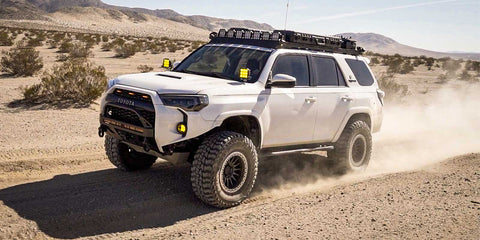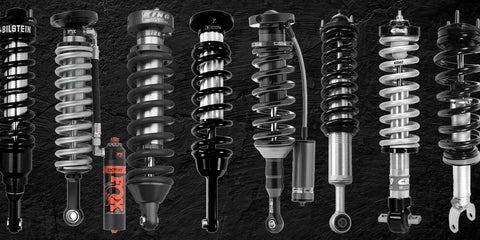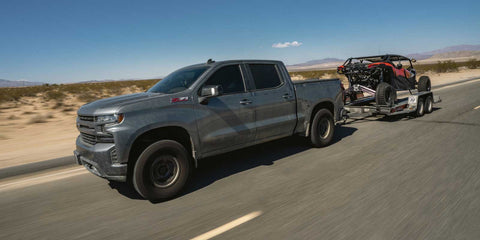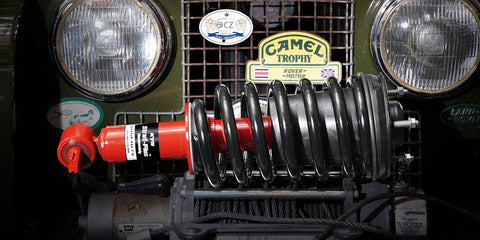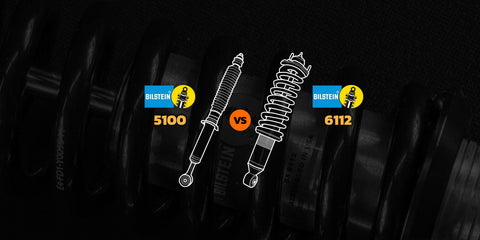Bilstein B6: At Home on Your Motorhome
Posted by Brandon Sevestre on
Bilstein’s for your Motorhome
These shocks are expected to perform at their very best in ultimate comfort after sitting for months on end in storage. We wanted to put a set of Bilstein’s B6 Shocks to the test and find out how they work in the real world under a strenuous coast to coast trip across the United States. Through the scorching deserts of the Southwest, humidity of the Southeast, the rolling great plains, and the mighty Rocky Mountains.
The Shocks: Bilstein B6
Bilstein has designed an entire product line dedicated to motorhomes. They offer a nitrogen filled monotube design with a 228% larger piston than the typical factory style twin-tube shock. This bigger piston translates to a shock with better heat dissipation for those long trips, and a simpler design brings more reliability. Bilstein also offers a separate comfort version of the B6 for smaller motorhomes and class B RVs, that may not have the same on-road demands as the larger Class C and A coaches. There are also options for 5th wheels and travel trailers with Dexter axles. All of these shocks include a zinc coating and black rubber boot for a long life. Bilstein backs the B6 with a limited lifetime warranty against any defects.
The Install
We started off with the factory shocks that Ford installed on their Class C E-450 Chassis. These Motorcraft twin tube shocks had seen about 46,000 miles and didn’t ride poorly per se, but still they severely lacked the level of control, stability, and confidence that we prefer. We decided to go with the Standard version vs. the Comfort version of the B6 because we frequently tow with our Class C, and the Standard version provides a firmer more controlled ride which becomes extra important when towing. While we prefer the control a stiffer ride gives, it should be noted Bilstein’s Comfort shocks make up about 70% of their sales for the E-Series Motorhomes, so those may be your best bet if you rarely pull a trailer.
Installing the Bilstein B6 Standard shocks on our Class C was straight forward. The front suspension on the E-Series chassis uses a Twin Traction beam with radius arms and a coil spring up front. The top nut on these can be tough to access, but we found using a 11/16” Spark plug socket to be the trick to getting the old shocks off with ease. The rear of the coach is supported by a massive set of traditional rear leaf springs. Since this RV is equipped with an Air Lift WirelessOne EZ Mount Air Bag system we were able to install the new shocks without the coach ever leaving the ground. While installing the shocks, we also took the time to upgrade the factory steering damper with a Bilstein B8 5100.
The Drive
Driving across the continent, we found the new Bilstein B6 Shocks to be much more consistent than the factory shocks. The harsh crashes that frequently shook the entire coach were no longer an issue on the Bilsteins. In the past, one lonely stretch of road full of cracks and patches would have left the coach floaty and drifting across the road, with little control. However, Bilstein’s digressive valving really shined here; At slower speeds we could feel some road harshness, but up at the higher speed limit of 65 mph the RV was gliding down the 2-lane road at a comfortable and confident pace. After long 10 to 12 hour drives across the desert with temperatures exceeding 120 degrees we never felt any issues with temperature sensitivity to the shocks. Additionally, the new Bilstein steering damper provided a much tighter feel. Where the previous stabilizer would leave the RV wandering, we now had more feedback from the road, allowing us to precisely direct this home on wheels.
Moving Forward
We have found Bilstein shocks tend to last a very long time. Since this vehicle only sees seasonal use, and we are very happy with the shocks’ performance, we have no foreseeable plans to upgrade. However, we do eventually plan to upgrade the rear leaf springs for a higher weight rating and towing capacity. It will be interesting to see how these shocks react to a stiffer leaf pack.
The Verdict
So, what did we learn about the Bilstein’s after a nearly 6000-mile road trip across America and back? What they provided was a far more consistent, stable, and predictable ride… which is what we were looking for. Long drives are now much more enjoyable, the scenery a bit easier to take in for the driver and less stress trying to keep it on the road. Surprisingly this also made for a much quieter and less messy RV, as the smoother ride prevented loose items from bouncing around inside the coach; all welcome improvements!









